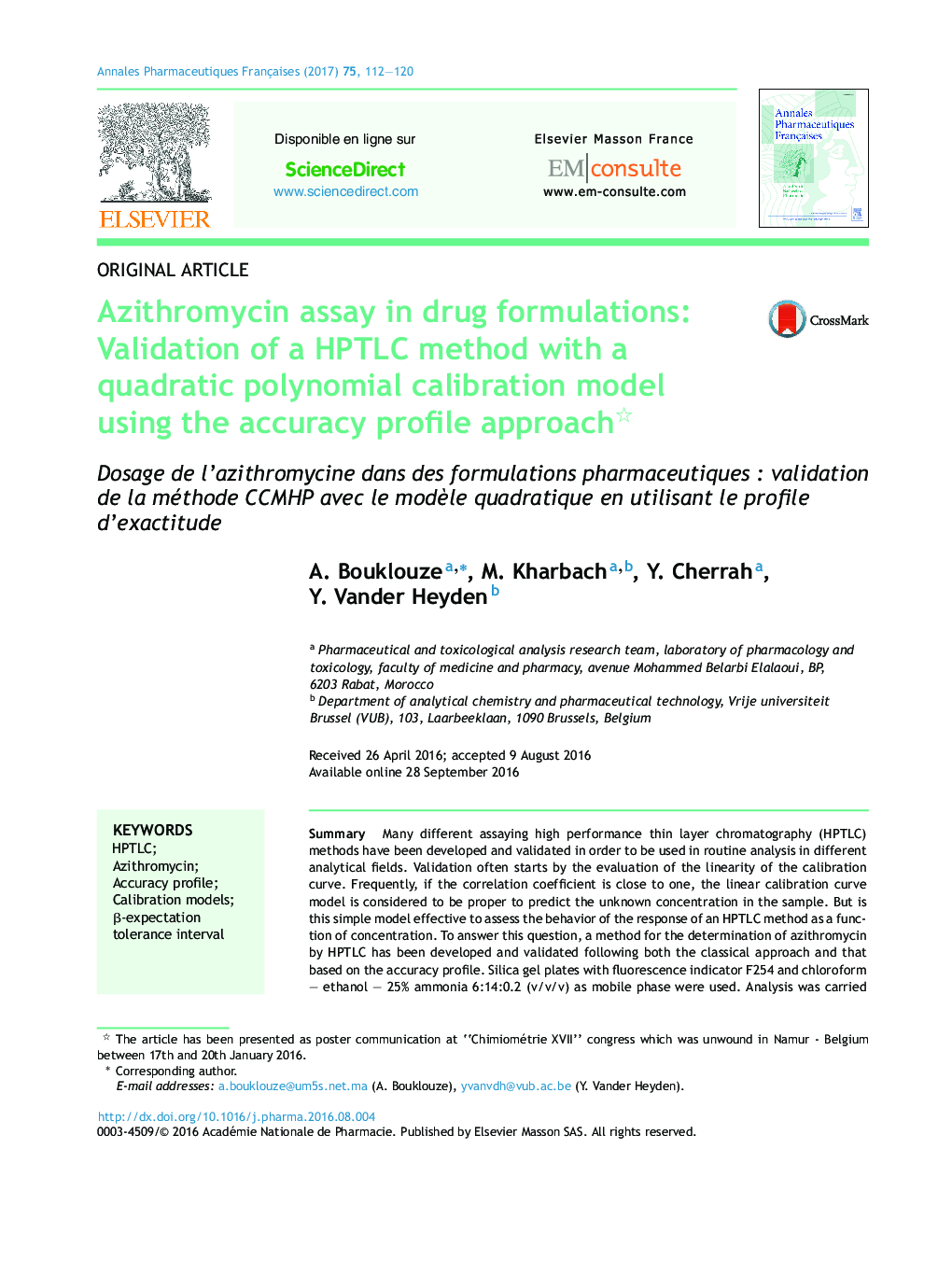| کد مقاله | کد نشریه | سال انتشار | مقاله انگلیسی | نسخه تمام متن |
|---|---|---|---|---|
| 5547026 | 1402777 | 2017 | 9 صفحه PDF | دانلود رایگان |

SummaryMany different assaying high performance thin layer chromatography (HPTLC) methods have been developed and validated in order to be used in routine analysis in different analytical fields. Validation often starts by the evaluation of the linearity of the calibration curve. Frequently, if the correlation coefficient is close to one, the linear calibration curve model is considered to be proper to predict the unknown concentration in the sample. But is this simple model effective to assess the behavior of the response of an HPTLC method as a function of concentration. To answer this question, a method for the determination of azithromycin by HPTLC has been developed and validated following both the classical approach and that based on the accuracy profile. Silica gel plates with fluorescence indicator F254 and chloroform - ethanol - 25% ammonia 6:14:0.2 (v/v/v) as mobile phase were used. Analysis was carried out in reflectance mode at 483 nm. The RF of azithromycin was 0.53. The validation based on the classical approach, shows that the behavior is not linear, even though r2 = 0.999 because the lack of fit test is significant (P < 0.05). Validation based on the accuracy profile approach considering both the straight line and the quadratic regression model, show that the former results is a β-expectation tolerance interval outside the acceptance limits, while with the latter, this interval is within the limits of ±5% acceptability for a range which extends from 0.2 to 1.0 μg/zone. With the quadratic model, the method showed to be precise and accurate.
RésuméPlusieurs méthodes de dosage utilisant la chromatographie sur couche mince de haute performance (CCMHP) ont été développées et validées pour leur usage en analyse en routine dans différentes domaines. Souvent, la validation démarre par l'évaluation de la linéarité de la courbe de calibration. Fréquemment, lorsque le coefficient de corrélation est proche de 1, la méthode est utilisée pour quantifier le soluté inconnu dans l'échantillon. Mais la question qui se pose est ce simple modèle est efficace pour évaluer le comportement de la réponse obtenue par la méthode de la CCMHP en fonction de la concentration. Pour répondre à cette question, une méthode de la détermination de l'azithromycine par CCMHP a été développée et validée selon la méthode classique et celle basée sur le profil d'exactitude. La phase stationnaire est constituée de plaques de gel de silice, la phase mobile est mélange de chloroforme-éthanol et ammoniaque (25 %) (6:14:0,2 (V/V/V). Le temps rétention est de 0,53 minutes. La validation par la méthode classique a montré un comportement non linéaire même avec un r2 = 0,999, parce que l'ajustement est significatif. La validation par la méthode basée sur le profile d'exactitude monter que l'intervalle de β-acceptance considérant le modèle simple est en dehors des limites d'acceptations, par contre pour le modèle quadratique, cet intervalle est situé à l'intérieur des limites de ±5 %. L'application du modèle quadratique a montré que la méthode est fidèle et exacte.
Journal: Annales Pharmaceutiques Françaises - Volume 75, Issue 2, March 2017, Pages 112-120